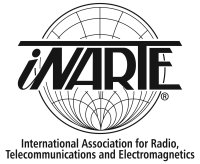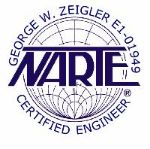How to Build a Lifetime Low Resistance and Low Impedance Earth Ground System for any Soil
the National Electrical Code (NEC), NFPA 780: Standard for the Installation of Lightning Protection Systems, IEEE Standard 142: Foundation for Grounding, 81-2012 - IEEE Guide for Measuring Earth Resistivity, Ground Impedance, and Earth Surface Potentials of a Grounding System, other industry accepted standards and best practices.
Designing a facility earth ground system for just low frequencies typically would only require ground rods and conductors. Quantities of each would be based only on type of soil and earth resistance required for the facility.
Designing a facility earth ground system for high frequencies in addition if the requirements of low frequencies have to consider the “skin effect” when high frequencies occur.
Skin effect causes the effective resistance of the conductor to increase at higher frequencies where the skin depth is smaller, thus reducing the effective cross-section of the conductor. The skin effect is due to opposing eddy currents induced by the changing magnetic field resulting from the alternating current.
This means that to have a highly effective facility earth ground system requires the addition of thin wide conductive components.
Some choices for wide conductive materials are:
- Conductive cement with minimum #2 bare solid tinned conductor (4/0 bare tinned stranded preferred)
- Conductive cement strip electrode only
- Thin bare tinned copper strips
Some choices for just reducing the soil resistivity are:
- Bentonite
- Chemical electrodes
- Coke powder
- Other resistance earth enhancement material
The National Electrical Code (NEC) references a Ground Ring as a ring encircling the building or structure, in direct contact with the earth, consisting of at least 6.0 m (20 ft.) of bare copper conductor not smaller than 2 AWG and is bonded to the building grounding electrode system and a minimum of 6’ apart. The Ground Ring shall be at least 30” below final grade. The NEC also uses rods for grounding electrodes with a minimum of eight feet (8’) in length in contact with the earth. The minimum diameter of the rod is ¼”. The NEC also states if 1 grounding electrode has an earth resistance of 25Ω or less a second electrode is not required. This minimum standard for a ground ring is not always sufficient for lightning strikes.
Most data and communication centers require the earth ground system by itself should be 5Ω or less.
Just because a ground ring reads 5Ω or less means that it is sufficient for lightning strikes and other high frequency voltage events. The earth ground system must be able to quickly dissipate both low and high frequencies to protect the facility and equipment in or nearby the facility.
Driving ground rods and connecting with a cooper conductor to the grounding electrode system of the building does not create a Lifetime Low Resistance and Low Impedance Earth Ground System for the facility.
« Back to Blog






Comments